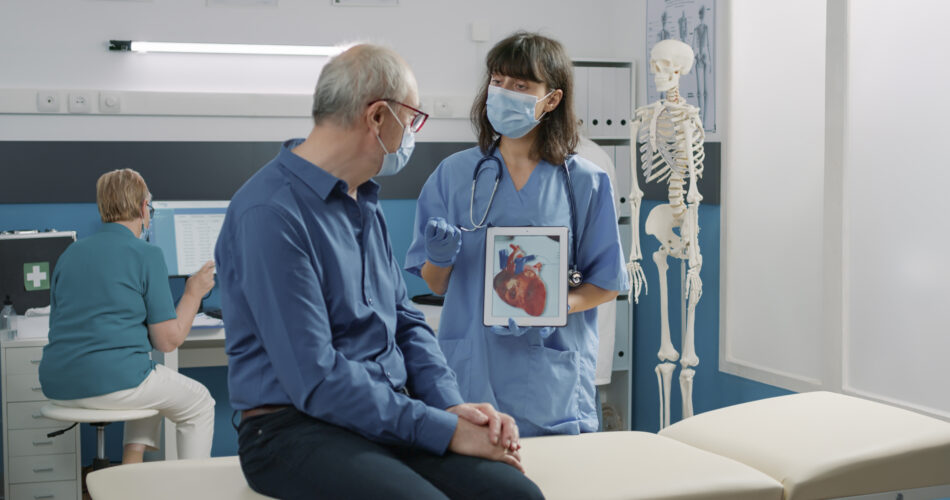As much as you should listen to your heart, you must also take care of it. Taking care of it goes beyond following a healthy lifestyle, including consuming a healthy diet and exercising regularly. What remains the cornerstone is to see how well your heart is performing from time to time.
But how do you know that? You can’t peek inside your heart, but you can see if it’s functioning well with the help of cardiac stress tests.
Stress tests paint the real picture of how well your heart is working. It includes how it works when it’s pumping hard. This may be extremely helpful when you have a heart disease or are experiencing some unusual symptoms such as anxiety, rapid heartbeat and chest pains.
As some heart diseases are easier to diagnose when your heart is working its finest to pump blood through your body., these tests check your heart while you exercise, usually on a treadmill or stationary bicycle. Although there are different types of stress tests, which we will be talking about in a while, all of them aim to check the blood flow in the heart, blood pressure, rhythm of your heart beat, heart rate, and the strength of electric signals which regulate your heart beats. To provide you a deeper analysis, some tests also capture pictures of your heart when you are at rest and when you are working its finest.
Let’s learn about these tests in detail
Types of cardiac stress tests
Stress echocardiogram:
A stress echocardiogram, often referred to as an “echo,” employs Doppler ultrasound to capture dynamic images of the heart. This imaging technique reveals the size, shape, and blood flow within the heart. The process involves capturing images both before and after the heart undergoes exertion. During the test, you’ll recline on your left side on a table while a healthcare professional manoeuvres an ultrasound device over your chest. If exercise, such as pedalling on a bicycle, is part of the test, a second set of images may be taken during the physical activity.
Nuclear stress test
A nuclear stress test utilises a small quantity of a radioactive substance known as a “tracer” and a specialised camera to scan the heart. The tracer is administered into your bloodstream through an IV line, allowing it to be absorbed by the heart and blood vessels, enhancing visibility in the images. The procedure includes capturing images before and after the heart’s maximum exertion. Post-test, the tracer naturally exits the body through urine, and adequate hydration facilitates its swift elimination.
Cardiac MRI stress test
The cardiac MRI stress test is an advanced diagnostic tool that provides highly detailed images of the heart using radio waves, magnets, and a computer. Typically reserved for severe heart conditions, this test may involve the injection of dye through an IV line in your arm for enhanced visualisation of minute details. Similar to other stress tests, images are acquired both before and after the heart’s exertion. During the test, you’ll lie on a table that slides into a spacious, tunnel-like MRI machine. The machine generates loud sounds as it captures images. If exercise is part of the protocol, you may either use a treadmill adjacent to the MRI or engage in exercise within the MRI machine, utilising special devices to move your limbs.
Considerations before undergoing cardiac stress tests:
Before scheduling a cardiac stress test, you should be aware of certain considerations to ensure accurate results and a safe testing experience.
Medical history review:
Provide your healthcare provider with a comprehensive medical history, including any pre-existing conditions, medications, allergies, and previous heart-related issues.
Fasting instructions:
Depending on the type of stress test, fasting may be required. Your healthcare provider will provide specific instructions regarding food and drink intake before the test.
Medication adjustments:
Inform your healthcare team about any medications you are currently taking. Some medications may need to be temporarily discontinued before the test.
How to prepare for the test?
Preparing for a cardiac stress test involves a combination of lifestyle adjustments and following healthcare provider instructions.
Wear comfortable clothing:
Opt for loose-fitting, comfortable clothing and sneakers suitable for exercise. This ensures ease of movement during the test.
Stay hydrated:
Proper hydration is essential. Drink water before the test, unless instructed otherwise, to maintain overall well-being.
Avoid stimulants:
Refrain from consuming stimulants such as caffeine and nicotine before the test, as they can affect heart rate and blood pressure.
What to expect during the test?
Here is what may happen during a cardiac stress test
Electrode placement:
Electrodes will be placed on your chest, arms, and legs to monitor your heart’s electrical activity throughout the test.
Baseline measurements:
Before stress is induced, baseline measurements, including heart rate, blood pressure, and ECG readings, will be recorded in a resting state.
Stress induction:
For exercise stress tests, you will gradually increase physical activity. Pharmacologic stress tests involve the administration of medications to simulate stress on the heart.
Continuous monitoring:
Throughout the test, healthcare professionals will closely monitor your vital signs and ECG readings to assess the heart’s response to stress.
Closing thoughts
Cardiac stress tests play a pivotal role in this journey, providing a comprehensive evaluation of heart function. By understanding the types of tests available, considering essential factors before undergoing these tests, and knowing how to prepare and what to expect, individuals can take proactive steps towards a healthier tomorrow.




